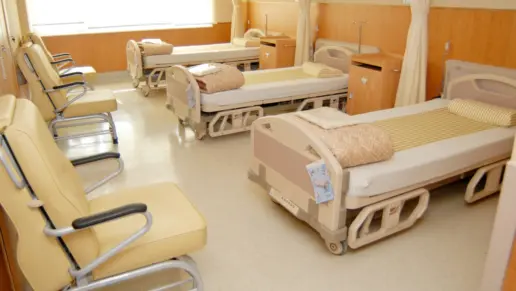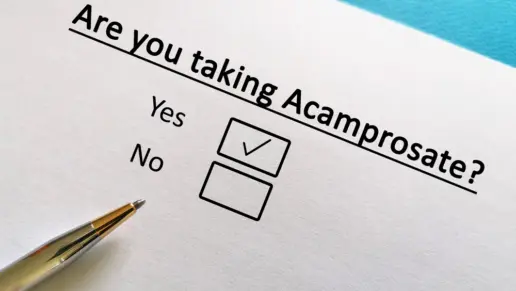Opioid addiction is a powerful disease that makes you dependent on opioids both physically and mentally, and as effective as therapy and addiction counseling can be, the addiction may be so strong that it’s difficult to stay sober long enough to benefit from therapy. That’s why specialized opioid addiction medications can be so beneficial, and Sublocade is one of them.
To find out whether this medication could help you in your addiction recovery, let’s explore what Sublocade is and its role in opioid recovery.
Treatment access and costs can vary depending on the type of insurance you have and the level of care your provider recommends. You can learn more about rehab options to understand how insurance may help cover MAT programs, detox, or ongoing outpatient treatment.
What Is Sublocade?
Sublocade is a prescription medication used to treat moderate to severe opioid use disorder (OUD). It is an injection of buprenorphine that you’ll receive once every one to two months.
Sublocade is used by healthcare providers after a client has completed an oral dose of buprenorphine to reduce withdrawal symptoms and provide stabilization. Medical personnel must observe patients for one hour after the initial dose of buprenorphine before Sublocade can be administered to decrease the risk of adverse events.
Once patients are stabilized, a health care provider may recommend an ongoing maintenance program that includes using Sublocade in conjunction with psychotherapy.
How the Sublocade Shot Works
Sublocade is a partial opioid agonist, which means it activates opioid receptors, but to a lesser degree than full agonists like heroin, fentanyl, or oxycodone. But, because it binds very tightly , it blocks other opioids from attaching.
This blunts the effect of other opioids. It works similarly to opioids in the body by binding to opioid receptors, but does not produce the full effect a full opioid agonist would. This leads to a ceiling effect, meaning that it does not allow for the full euphoric experience that morphine or heroin may produce.
Partial agonists do not increase tolerance and therefore do not require an increased dosage over time. This lowers the risk of overdose.
As an extended release medication, Sublocade starts as a liquid but turns into a solid gel called depot when it’s in your body. The gel then gradually releases buprenorphine at a sustained and controlled rate. This effectively provides relief from withdrawal symptoms and cravings over an extended period of time.
Releasing Sublocade at a continuous sustained level over a period of time eliminates the daily ups and downs of daily dosing. Research during the development trials indicated that a steady level of Sublocade was maintained in the bloodstream as opposed to levels spiking and dropping during daily dosing.
Benefits of Using Buprenorphine in Addiction Treatment.
Sublocade offers a long-term management option for OUD and is one of many tools used by providers. During research trials, statistics indicated a 14 percent higher success rate than without using Sublocade injections. Treatment success was defined as opioid-free from illicit drugs for at least 80 percent of time.
Sublocade reduces the risk of overdose by binding to opioid receptors in the brain without producing the respiratory depression other opioids cause. Sublocade also partially blocks other opioids from binding to receptor cells, lowering the risk of overdose. Because Sublocade dosing is injected monthly, it reduces the potential for missing dosages which is possible in daily dosing.
Sublocade blocks the reward of euphoria experienced when using opioids – the feeling that motivates people to continue to use. Buprenorphine helps the brain adjust to functioning without that feeling of being high and reduces cravings and withdrawal symptoms. This can make a person be less interested in continuing to use opioids to get high.
Frequently Asked Questions
Sublocade is a once a month shot given in the abdomen. The effects can last for 43 to 60 days, but the medication can stay in your system for up to a year.
Side effects of Sublocade are similar to any opioid medication and can cause serious and life-threatening breathing problems. Side effects such as feeling faint or dizzy, sleepy and uncoordinated, blurred vision and slurred speech, and confusion have been reported.
Liver problems, allergic reactions and a decrease in blood pressure have also occurred. It is important to talk with the administering health care provider about any symptoms or reactions.
Sublocade withdrawal occurs after 43 to 60 days and will require ongoing treatment. To fully withdraw from Sublocade, supervision by a medical provider is necessary. Because Sublocade is a partial opioid agonist, withdrawal is similar but less intense than withdrawing from drugs such as heroin, morphine or codeine.
Withdrawal symptoms include nausea, sweats and muscle aches as well as chills, diarrhea, and stomach cramps. People have also reported insomnia, anxiety, and depression during withdrawal from opioids.
Comparing Sublocade with other MAT Options
Sublocade is one of several medications that can be used in MAT or medication assisted treatment – the technique of combining medications with therapy for addiction recovery. How does Sublocade compare to other MAT medications?
Vivitrol vs Sublocade
Sublocade is an agonist medication made with a partial agonist opioid, which binds to the pain receptors in the brain to produce a similar effect as a full agonist opioid would. This creates a reduction in cravings and withdrawal symptoms without producing euphoria.
Vivitrol, on the other hand, is an antagonist which blocks opioid receptors in the brain from responding. This means that if you were to use opioids while on Vivitrol, you would be less likely to get high. Like Sublocade, Vivitrol is an extended release medication that will be active for up to one month.
Brixadi vs Sublocade
Both medications are injections of buprenorphine and used to treat OUD. The main difference between these two types of buprenorphine is that Brixadi offers more options for dosing and injection sites than Sublocade.
Brixadi offers four weekly or four monthly options and can be injected in the arm, thigh, or abdomen. Sublocade, on the other hand, has two fixed dosage options and is only available as monthly injections in the abdomen.
Sublocade vs Suboxone
Suboxone contains both buprenorphine and naloxone to protect from potential overdose.
Suboxone is dosed as a dissolvable oral film placed under the tongue and is taken daily. It can last up to 24 hours and can be used as a taper treatment, with your provider gradually reducing your dosage to ease withdrawal symptoms. Sublocade, on the other hand, is administered as a subcutaneous (under the skin) injection.
Methadone vs Sublocade
Methadone is a full opioid agonist while the buprenorphine in Suboxone is a partial agonist. Both are used for long term maintenance of abstinence from illicit opioids. Methadone is taken orally on a daily basis, while Sublocade is a monthly injection. Methadone can be self-administered while Sublocade is only injected by a health care provider.
Combining Buprenorphine with Comprehensive Treatment
Psychotherapy assists in identifying motivating factors behind addiction through exploring the emotional stressors and ingrained destructive behaviors used in coping with life.
Through identifying trauma, abandonment, neglect, and abuse experienced in life, therapy provides a safe environment for healing from those experiences and can help clients learn new ways to live. Therapy can last for as long as necessary and will need to be sustained throughout the MAT treatment.
Peer support systems such as Alcoholics Anonymous, Narcotics Anonymous and SMART Recovery are often part of a treatment program. They assist clients in developing support systems apart from connections they had while in their addiction.
Mentoring, education and resources provided through these peer programs support long term sobriety. Peer supports are now incorporated into most inpatient rehabilitation programs and continued through outpatient aftercare treatment.
Additionally, sober housing and case management along with other types of expressive therapies are integrated into a comprehensive treatment plan that supports MAT. Pain management courses offered through local hospitals or clinics can also be helpful for those experiencing an injury that causes chronic pain.
Many inpatient and outpatient treatment programs exist throughout the country and can be located through various websites such as Rehab.com. There are also free services operated by the government to help you find treatment, like findtreatment.gov.
Because the opioid crisis accounts for almost 80 percent of all deaths by drug overdose according to the National Institute on Drug Abuse, the necessity of providing services to save lives is a crucial focus of the treatment industry. Pharmacological options along with therapeutic interventions increase access and options for people to choose a new lifestyle apart from addiction.
If you’re ready to compare treatment programs or explore different MAT options, you can also learn more about rehab options to find supportive facilities near you.
Addiction Centers That Offer Medically Assisted Detox
Finding facilities near you…





